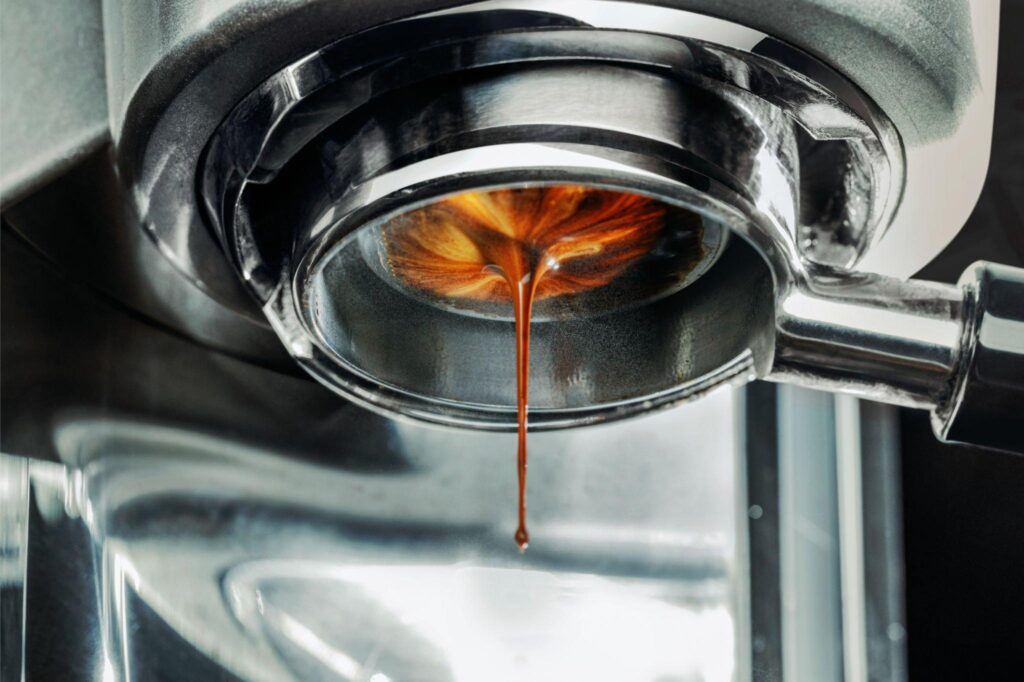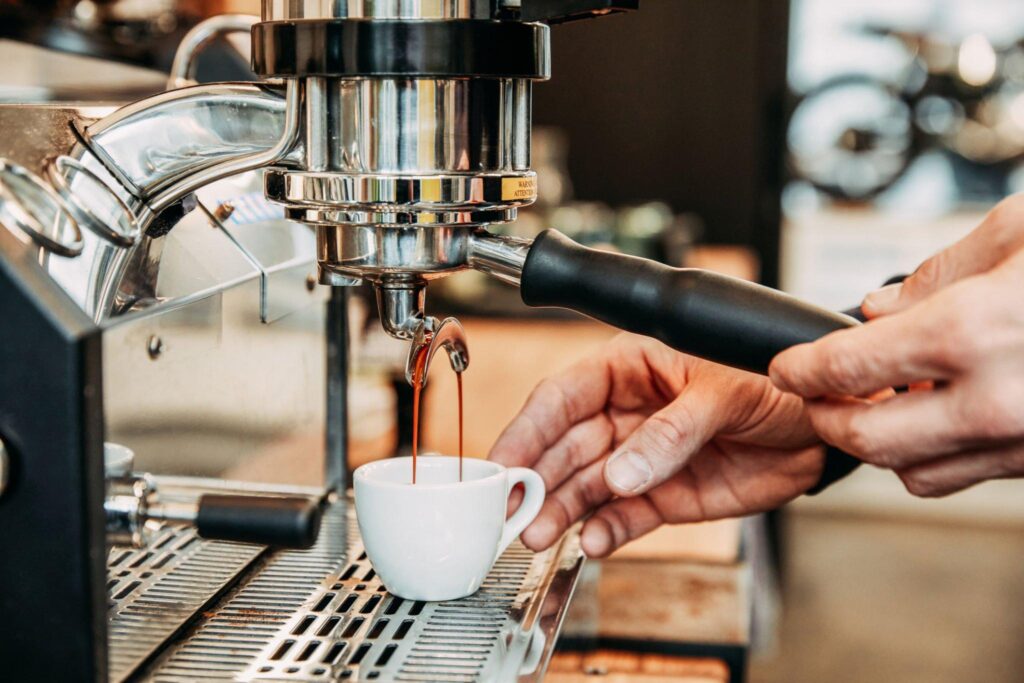Imagine waking up on a Monday morning, groggy and still adjusting to daylight, desperately needing a steaming cup of coffee to kickstart your day. You make your way to the kitchen, get your favorite coffee cup, and proudly place it under your trusted Keurig machine, only to realize that – gasp – it won’t brew! We’ve all been there; whether it’s a Monday morning, a mid-week slump, or a weekend pick-me-up gone wrong, experiencing a malfunctioning Keurig can be distressing.
Fear not, my fellow coffee aficionados, as this doesn’t have to ruin your day or send you frantically driving to the nearest coffee shop. In this blog post, we will provide you with some essential tips and tricks to help you troubleshoot your Keurig brewing problems and offer a step-by-step guide on how to fix Keurig won’t brew. So, buckle up, and let’s learn how to get that caffeine back on track and, most importantly, back into your cup!
Introduction To Keurig Coffee Makers

Keurig Coffee Makers have become one of the most popular coffee makers on the market, promising a consistent taste and convenient brewing process. However, for any Keurig machine owner, encountering the problem of it not brewing can be frustrating. The good news is that most issues can be easily fixed without requiring technical intervention. Ensuring the machine is assembled correctly, including the water reservoir and magnet, is important. Solutions like the ‘spanking’ technique, mixing vinegar and hot water, and using a paperclip to clean the needle, the lid, or the tubes can address clogging issues.
Electrical or mechanical problems could also be a cause and can be fixed by unplugging the machine or cleaning the debris at the bottom of the water reservoir and valve. Regular cleaning of the Keurig machine is necessary to avoid debris build-up. Although troubleshooting is necessary for these coffee makers, Keurig remains a popular choice for coffee lovers who enjoy quick, quality brews.
Common Keurig Brewing Issues
Here are some common brewing issues that Keurig owners may experience:
Firstly, the Keurig may not brew properly due to misassembly. Ensure the water reservoir is correctly installed, and the machine is complete. If the auto shut-off feature is turned on, the machine may not brew.
Secondly, residual water and coffee grounds may be trapped inside the machine, causing it not to brew. Use the spanking technique to remove these. If the needle is clogged with coffee grounds or minerals, it won’t puncture the K-cup foil lid. Clean the internal filters with a mixture of vinegar and hot water. Use a paperclip to remove any remains left inside.
If the display is blank, unplug the machine for a few minutes and plug it back in. If the Keurig still doesn’t brew, debris may be present at the bottom of the reservoir or in the water valves. Clean these with warm water and soap.
Finally, ensure the correct pods are used, and the machine is not overfilled. If the issue persists, call customer service for further assistance.
With these tips and tricks, Keurig owners can easily solve the most common brewing issues and enjoy their morning coffee.
Read more:
- Keurig Descaling Troubleshooting: Ways to Fix Keurig Descale Light Won’t Turn Off
- Easy Fixes for When Your Keurig Only Brews Half a Cup of Coffee
- Keurig Coffee Maker Not Heating? Here’s Why and How to Fix It
- Keurig Troubleshooting: How to Fix Add Water Error When Tank is Full
Keurig Won’t Brew? Tips And Tricks To Fix The Problem!
Keurig coffee makers are a popular and convenient way to brew coffee, but problems can arise if the machine won’t brew. The first step is to ensure that the machine is set up correctly, with the correct amount of water and settings. If everything looks right, a reset may be necessary, but the Keurig still won’t brew. This involves opening and closing the brew head, unplugging the machine, and letting it sit for at least half an hour before resetting any incorrect settings. Frequent cleaning, such as descaling, is also crucial to maintaining the machine’s performance. If these steps fail to solve the problem, Keurig’s customer service may be able to help or replace parts under warranty. By following these tips and tricks, Keurig owners can successfully fix their machines and continue to enjoy delicious coffee in no time.
Checking For Basic Setup Errors
Keurig is a well-known coffee maker brand that offers a convenient and easy way to brew coffee. However, some Keurig users may encounter problems with their machines, such as their Keurig not brewing. Before panicking or calling customer support, the first thing to check is the basic setup. This includes ensuring the machine is plugged into an active outlet, enough water is added to the reservoir, and the settings are correctly configured. It is essential to review the user manual and ensure all necessary steps are taken. Sometimes, the problem may be as simple as a missed step in the setup process. Checking for basic setup errors is the first step in troubleshooting a Keurig that won’t brew.
Resetting Your Keurig Coffee Maker
If your Keurig coffee maker won’t brew, one of the best solutions to try out is resetting it. This is because Keurigs have many moving parts that can easily break down and interrupt the brewing process, which is why resetting is a critical step to troubleshoot issues with your coffee machine. Begin by checking if everything is set up correctly, and if everything seems to be in place, a full reset is recommended. To reset the machine, open and close the brew head, turn it off, unplug it from the wall, and let the machine sit for at least 30 minutes. Once the time has passed, reset any settings that look wrong, and your Keurig should be back to its normal operation. Remember, this process is not glamorous, but ensuring your Keurig stays in perfect shape and brews delicious coffee for a long time is essential.
Descaling Your Keurig Machine
If your Keurig machine is not brewing properly, there are a number of things that could be causing the problem. One of the common causes of this problem is a mineral buildup in the machine, which can affect the quality of the coffee it produces. To fix this issue, you will need to describe your Keurig machine regularly. Descaling involves running a solution of hot water and vinegar through the machine to remove any accumulated mineral buildup over time. This will help ensure that your Keurig machine always produces the best quality coffee possible.
To descale your Keurig machine, you will need to remove the water reservoir and clean it with dish soap and water. You will then need to fill the reservoir with a solution of half water and half vinegar and run several cycles of hot water through the machine until the reservoir is empty. Once this is done, you can fill the reservoir with fresh water and run several more cycles to ensure that all of the vinegar has been flushed out of the machine. After you have finished descaling your Keurig machine, you should notice that it is brewing better than ever before.
It is important to note that not all Keurig machines are the same, and some may require additional steps to descale properly. It would be best if you always referred to the owner’s manual that came with your Keurig machine to ensure that you are using the correct descaling method. Additionally, it would be best if you never used anything other than vinegar or a Keurig descaling solution to clean your machine, as other chemicals can damage the machine and affect the quality of the coffee it produces. By descaling your Keurig machine on a regular basis, you can help to ensure that it continues to brew great coffee for years to come.
Cleaning Your Keurig
Cleaning your Keurig is an important step in ensuring that it continues to brew your favorite beverages effectively. One of the most common issues that Keurig machine owners experience is the machine not brewing properly. This could be due to mineral buildup or debris inside the machine, which can eventually clog the needle or water valve. To clean the machine and remove any mineral buildup, mix together equal parts vinegar and water and run the solution through the machine a few times. Afterward, run several cycles with just water to rinse the machine thoroughly.
In addition to cleaning the internal filters with vinegar and water, it’s also important to clean the metal mesh filter inside the water reservoir. This filter can collect debris over time, which can then interfere with the machine’s brewing process. To clean the filter, remove it from the reservoir and wash it with warm water and soap. Allow it to dry completely before replacing it in the reservoir.
Another common area where debris can collect is at the bottom of the water reservoir. If this buildup becomes too thick, it can prevent the machine from brewing properly. To clean the bottom of the reservoir, simply remove it from the machine and clean it with warm water and soap.
It’s also important to clean any external parts of the machine, such as the drip tray and the exterior surfaces. These areas can collect dirt and grime over time, and cleaning them regularly can help to ensure that your Keurig machine remains in good working order for years to come. Use a soft cloth and mild soap to clean the exterior of the machine, and clean the drip tray with warm water and soap.
Troubleshooting A Clogged Keurig
One of the most frustrating things for a coffee lover is when their Keurig won’t brew. Sometimes, the issue may be a clogged machine. Fortunately, a few troubleshooting steps can help fix the problem.
Firstly, users can check if a blockage is present anywhere in the machine. If yes, they can try cleaning or resetting it. A simple reset can help in ensuring that all parts of the machine are seated properly. For this, the user needs to unplug the machine from the wall and detach and reattach the water reservoir to ensure its magnet is in place.
If a reset doesn’t solve the problem, users should try spanking or banging the unit on the bottom a few times. This could get rid of any coffee grounds or debris that might be stuck inside the machine.
Another area that can get clogged is where the K-cup is inserted. Users can remove the K-cup holder and clean the interior of the holder base as well as the entire housing with a clean, damp, soapy cloth. This will ensure that users can enjoy a brew that is free from obstructions.
Overall, users can take a few simple steps to troubleshoot a clogged Keurig machine. By employing these techniques, users can ensure their Keurig coffee maker is back to normal operation.
Resetting A Keurig With Malfunctions

Keurig coffee makers are a convenient way to brew a cup of coffee, but sometimes malfunctions occur, and the Keurig won’t brew. One possible solution is resetting the machine. Start by checking if the machine is properly set up, including being plugged in and filled with enough water. If the machine still won’t work, try a full reset recommended in the user manual. Leaving the Keurig unplugged and turning it off and on again may solve the issue. If none of these steps work, it’s time to clean the machine. Descaling is key in maintaining Keurig’s performance, as mineral buildup can hinder brewing. If none of these fixes work, don’t hesitate to check the manufacturer’s warranty and consider contacting customer service for a professional fix. Taking these steps can help solve Keurig brewing problems and get you back to enjoying a delicious cup of coffee in no time.
Keurig Turning On/off On Its Own
Keurig coffee makers are known for their convenience and simplicity, but issues can arise with any machine. One problem that some Keurig owners have encountered is the machine turning on and off on its own. This can be frustrating and may make you think your machine is haunted, but fortunately, there is an easy fix.
The cause of the problem is often the Keurig machine’s energy-saving mode. If the machine senses that it hasn’t been used for a certain amount of time, it will shut off to save energy. However, the machine can sometimes be overly sensitive and turn on and off unnecessarily.
To fix this issue, you can modify the energy-saving settings by accessing the “Auto Off” feature in the settings menu. You can choose to disable this feature entirely or increase the time before the machine shuts off. This should prevent the machine from turning on and off unexpectedly and allow you to enjoy your coffee without interruption.
In addition, it’s important to ensure that your Keurig is properly maintained and cleaned. Mineral buildup and debris can cause various issues, including the turning on and off problem. Regular cleaning and descaling can help prevent and resolve such problems and keep your Keurig functioning properly.
Contacting Keurig Support For Additional Help
Keurig coffee machines are famous for their simplicity of use, but there are times when your Keurig won’t brew, no matter what you do. If you have tried all the solutions and your Keurig is still malfunctioning, then it may be time to contact Keurig support for additional help. Keurig customer support is one of the best in the business, and they can help you solve any issues you have with your Keurig.
When you contact Keurig support, make sure to provide them with all the necessary details about your machine and the problem you are experiencing. They may ask you to perform some troubleshooting steps to help narrow down the problem, so be prepared to follow their instructions. Also, check if your machine is still under warranty, as it may be covered for replacement or repair. Keurig representatives will be happy to assist you in whatever way they can, and their customer service is always prompt and friendly.
In conclusion, if your Keurig machine is not functioning, do not hesitate to contact Keurig support for advanced help. They have a team of professionals who can help you resolve your issues and get your Keurig up and running again. With their assistance, you can be sure your coffee will taste just as good as when you bought your Keurig machine.
FAQ
Q: What should I do if my Keurig won’ts brew?
A: First, check to make sure it’s plugged in, and the power button is on. If it still doesn’t brew, try cleaning the machine by removing the water reservoir, drip tray, and pod holder and washing them with dish soap and hot water. Clogs in the engine can cause brewing problems.
Q: Why is my Keurig brewing less than the desired amount?
A: Ensure that the water reservoir is fully connected to the base and the filter is clean or replaced. If the exit or entrance needles are clogged, use a paperclip to clear out debris.
Q: How can I fix a leaking Keurig?
A: Check for a clogged puncture needle and clean it with a paperclip. Consider using descaling and rinsing pods to clean the machine. Make sure the K-cup pod is the right size and has a tight foil lid. Ensure the O-Ring seal and water reservoir are properly in place.
Q: Why is my Keurig noisy?
A: If the machine is still brewing correctly, it might just be a normal noise. If not, check if the brewing needle is clogged and clean it out per Keurig’s instructions.
Q: Can I reset my Keurig?
A: Yes, turn the machine off and unplug it for a few minutes before reconnecting the water reservoir and turning it back on. If you are still having issues, contact Keurig customer support.
Conclusion
For Keurig machine owners, a not-so-pleasant experience is when the machine won’t brew. However, most of the time, the issue is not serious and can easily be fixed without the need for a technician. The most common reasons why a Keurig won’t brew include misassembly, clogging, electrical glitches, and debris build-up. It is important to ensure the machine is set up correctly and the water reservoir is installed with a not misplaced magnet. If clogging is the issue, a mixture of vinegar and hot water can clean the internal filters and needles, followed by running several cycles with just water. Regular cleaning and descaling of the Keurig are important to prevent mineral build-up that can cause blockages. For more severe problems, calling Keurig customer service may be helpful. Overall, by checking for misassembly, removing clogs and debris, and regularly cleaning and descaling the machine, Keurig owners can enjoy a cup of delicious coffee in no time.

James Robinson loves coffee and blogging all about coffee. His blog is full of informative posts about the best ways to enjoy coffee and the many different types of coffee out there. He also shares recipes for delicious coffee-based dishes, and his followers can always count on him to offer tips on how to improve their coffee-making skills.
